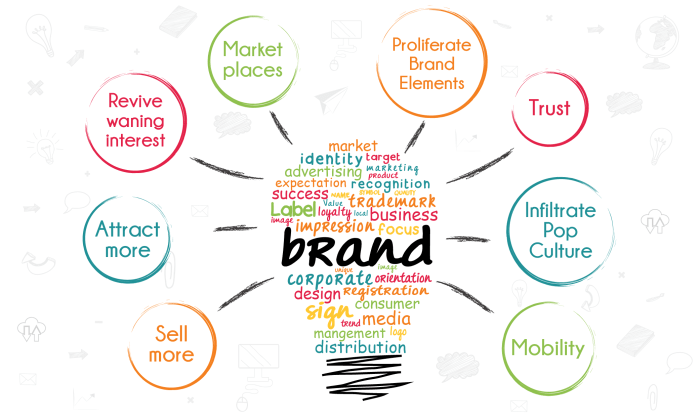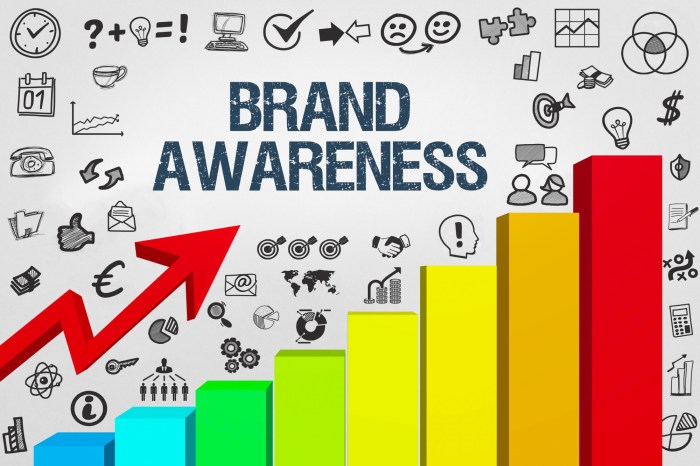Building Brand Awareness Campaigns takes center stage, inviting readers into a world of successful marketing strategies and impactful results. Get ready to dive into the realm of brand recognition and customer loyalty like never before.
In this comprehensive guide, we’ll explore the importance of brand awareness campaigns, effective strategies for implementation, target audience identification, measuring success, and more.
Importance of Building Brand Awareness Campaigns

Building brand awareness campaigns is crucial for businesses to establish a strong presence in the market, attract new customers, and retain existing ones. By increasing visibility and recognition, companies can differentiate themselves from competitors and build a loyal customer base.
Examples of Successful Brand Awareness Campaigns
- The “Just Do It” campaign by Nike: This iconic slogan helped Nike become one of the most recognizable and successful sports brands globally.
- The “Share a Coke” campaign by Coca-Cola: Personalizing their products with popular names increased customer engagement and brand loyalty.
- The “Think Different” campaign by Apple: This campaign highlighted Apple’s innovative and creative approach, setting them apart in the tech industry.
Impact on Companies
Brand awareness campaigns not only increase visibility but also help in building trust and loyalty among customers. When consumers are familiar with a brand, they are more likely to choose it over competitors, leading to higher sales and revenue. Additionally, strong brand awareness can help companies weather crises and challenges, as loyal customers are more likely to support the brand during difficult times.
Strategies for Building Effective Brand Awareness Campaigns: Building Brand Awareness Campaigns
In today’s fast-paced digital world, having a strong brand awareness campaign is crucial for the success of any business. Let’s explore various strategies that can help in building an effective brand awareness campaign.
Social Media Marketing
Social media platforms like Instagram, Facebook, Twitter, and LinkedIn offer a great opportunity to reach a large audience and create brand awareness. By consistently posting engaging content, interacting with followers, and utilizing paid advertising, businesses can increase their brand visibility and connect with potential customers.
Influencer Partnerships
Collaborating with influencers who have a large and engaged following can significantly boost brand awareness. Influencers can create authentic content that resonates with their audience, helping to introduce your brand to new potential customers. Choose influencers whose values align with your brand to ensure a successful partnership.
Content Marketing
Creating valuable and relevant content can help establish your brand as an authority in your industry. Whether it’s blog posts, videos, podcasts, or infographics, providing informative and entertaining content can attract and retain the attention of your target audience. Consistency is key in content marketing to maintain brand visibility.
Comparison of Marketing Channels, Building Brand Awareness Campaigns
Each marketing channel has its own strengths and weaknesses when it comes to building brand awareness. While social media marketing is great for reaching a broad audience, email marketing can be more personalized and targeted. It’s essential to understand your target audience and choose the right mix of marketing channels to maximize brand exposure.
Tips for Creating Engaging Campaigns
– Know your target audience and tailor your messaging to resonate with them.
– Utilize storytelling to create an emotional connection with your audience.
– Use eye-catching visuals and creative content to capture attention.
– Monitor and analyze campaign performance to make data-driven decisions for future campaigns.
Target Audience Identification for Brand Awareness Campaigns
Identifying the target audience before launching a brand awareness campaign is crucial for its success. By understanding who your ideal customers are, you can tailor your messaging and strategies to resonate with them effectively.
Importance of Identifying the Target Audience
- Allows for personalized communication: Knowing your target audience helps you speak their language and address their specific needs and pain points.
- Maximizes ROI: By focusing your efforts on reaching those most likely to convert, you can avoid wasting resources on audiences that are unlikely to engage with your brand.
- Improves brand loyalty: Tailoring campaigns to your target audience creates a connection and fosters loyalty among customers who feel understood and valued.
Methods for Researching and Understanding the Target Audience
- Conduct surveys and interviews: Direct feedback from your audience can provide valuable insights into their preferences, behaviors, and motivations.
- Utilize analytics tools: Analyzing data on website traffic, social media engagement, and customer demographics can help paint a clearer picture of your target audience.
- Competitor analysis: Studying your competitors’ target audience can offer valuable information on potential customers you may have overlooked.
Tailoring Campaigns to Specific Demographics
- Customize messaging: Adjust your brand voice, imagery, and content to align with the preferences and interests of different demographic groups.
- Choose the right channels: Target specific demographics on platforms where they are most active to maximize brand exposure and engagement.
- Create personalized experiences: Develop campaigns that speak directly to the unique needs and desires of different segments within your target audience.
Measuring Success of Brand Awareness Campaigns

Building a successful brand awareness campaign is just the beginning. To ensure its effectiveness, it is crucial to measure its impact using key performance indicators (KPIs) and continuously optimize based on performance metrics.
Key Performance Indicators (KPIs)
Key performance indicators are essential metrics used to evaluate the success of brand awareness campaigns. Some common KPIs include:
- Brand Recall: The ability of consumers to remember your brand after exposure to your campaign.
- Reach: The number of people who have been exposed to your campaign.
- Engagement: The level of interaction and interest generated by your campaign among the target audience.
- Website Traffic: The increase in website visits resulting from the campaign.
- Social Media Mentions: The volume of mentions and conversations about your brand on social media platforms.
Tracking and Analyzing Campaign Impact
Tools and techniques are essential for tracking and analyzing the reach and impact of brand awareness campaigns. Some common tools include:
- Google Analytics: Provides detailed insights into website traffic, user behavior, and conversions.
- Social Media Analytics: Platforms like Facebook Insights, Twitter Analytics, and Instagram Insights offer data on reach, engagement, and audience demographics.
- Surveys and Feedback: Collecting feedback from the target audience through surveys and feedback forms can provide valuable insights into campaign effectiveness.
- Brand Monitoring Tools: Tools like Brandwatch, Mention, and Brand24 help track brand mentions, sentiment, and trends across the web.
Continuous Monitoring and Optimization
Continuous monitoring and optimization based on performance metrics are crucial for the success of brand awareness campaigns. By analyzing the data and making necessary adjustments, you can ensure that your campaign reaches its full potential and resonates with the target audience.












